Methods of Recognition Based on Wavelet Transform for Analysis of Characteristics of Spherical Quantum Dot †
Abstract
1. Introduction
- Statistical characteristics (mean, dispersion, standard deviation) are used to conduct a wavelet coefficient (CWT) and signal component (DWT) analysis.
- An energy spectrum analysis examines the energy spectrum and is used only for signal components (DWT).
- Stochastic characteristics (fractal dimensionality, Hurst index, correlation dimensionality and phase space dimensionality) evaluate the chaotic nature of wavelet coefficients (CWT) and signal components (DWT).
2. Theoretical Research and Analytical Part
3. Conclusions
Author Contributions
Funding
Institutional Review Board Statement
Informed Consent Statement
Data Availability Statement
Conflicts of Interest
References
- Smolentsev, N.K. Fundamentals of Wavelet theory. Wavelets in MATLAB; DMK Press: Moscow, Russia, 2008. [Google Scholar]
- Zakharov, A.A.; Kozhanova, E.R.; Tkachenko, I.M. Comparative Characteristics of Classical Fourier Transform and Continuous Wavelet Transform Applications: Tutorial; Saratov State Technical University: Saratov, Russia, 2012. [Google Scholar]
- Lazorenko, O.V.; Lazorenko, S.V.; Chernogor, L.F. Wavelet analysis of model signals with features. 1. Continuous wavelet transform. Radiophys. Radio Astron. 2007, 12, 182–204. [Google Scholar]
- Brkić, S. Optical properties of quantum dots. Eur. Int. J. Sci. Technol. 2016, 5, 98–107. [Google Scholar]
- Belyaev, V.V.; Kozhanova, E.R.; Tkachenko, I.M.; Marusin, A.V. Mathematical modeling of optical amplifier processes with modification of the active area. In Proceedings of the 2022 International Conference Laser Optics (ICLO), St.Petersburg, Russia, 20–24 June 2022; p. 1. [Google Scholar] [CrossRef]
- Tkachenko, I.M.; Kozhanova, E.R.; Belyaev, V.V.; Yazbeck, H. Comparative analysis of application of wavelet analysis for the recognition of element composition nanostructures. J. Phys. Conf. Ser. 2019, 1309, 012020. [Google Scholar] [CrossRef]
- Belyaev, V.; Yazbek, H. Application of quantum dot technology for electro-optical and optoelectronic devices. Electron. Sci. Technol. Bus. 2020, 9, 131–139. [Google Scholar]
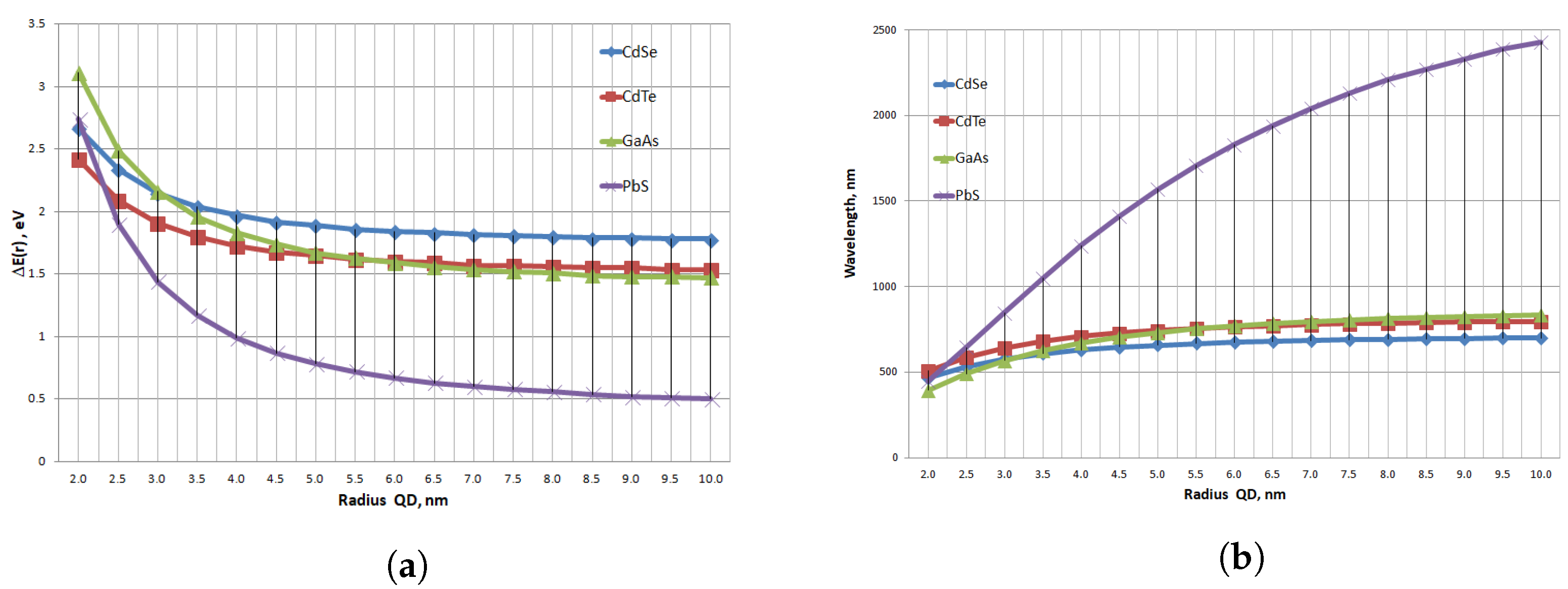
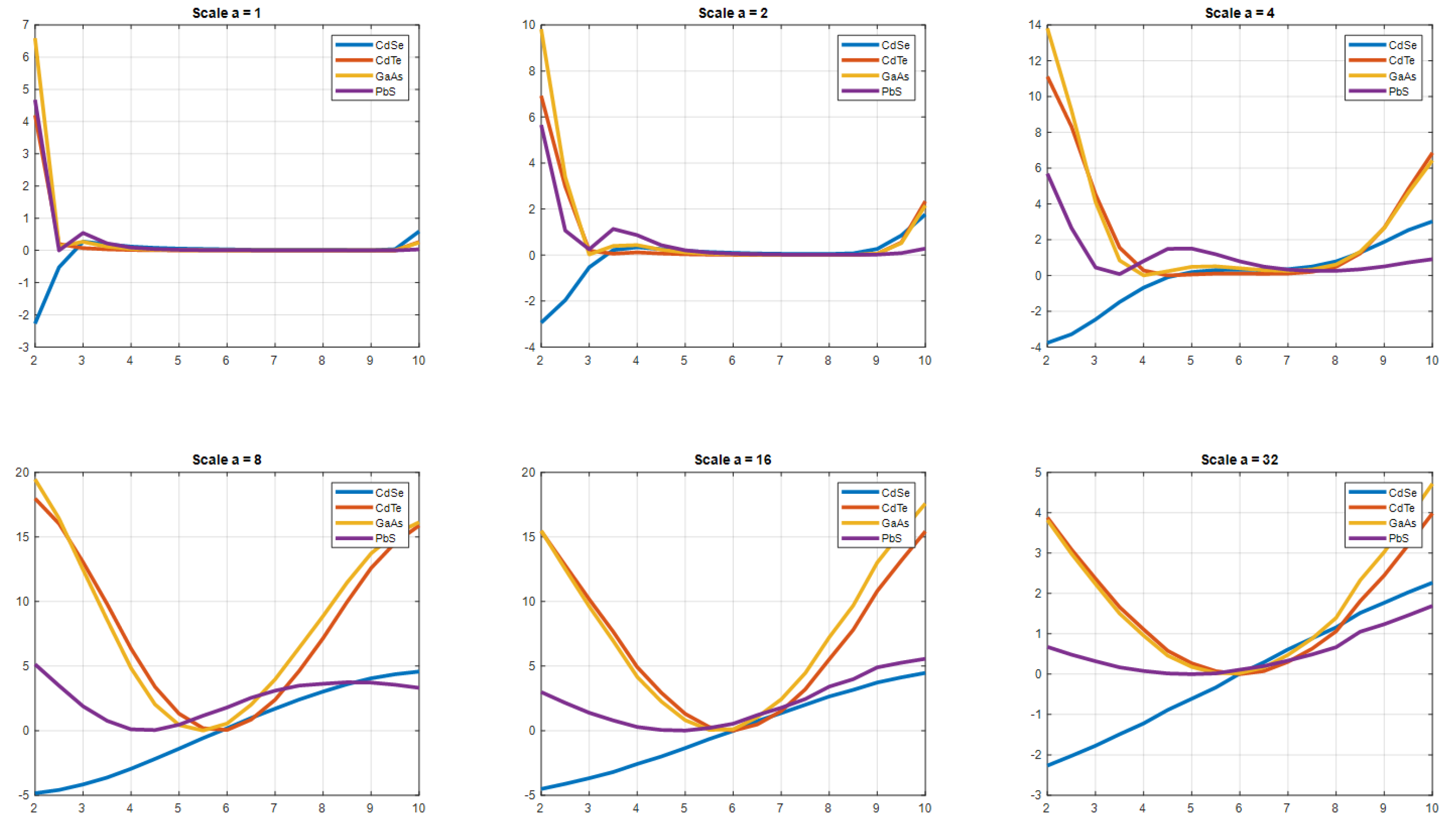
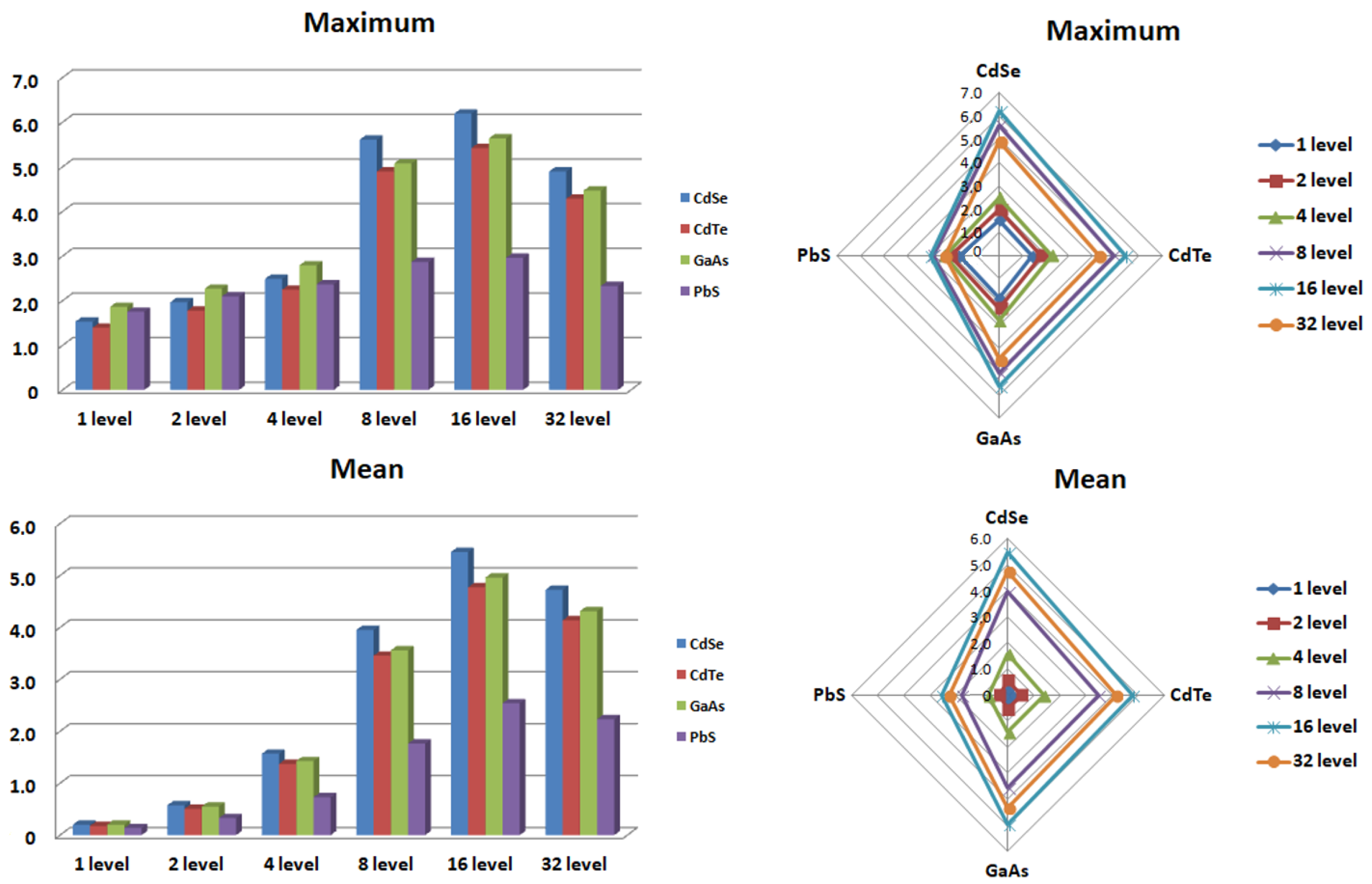
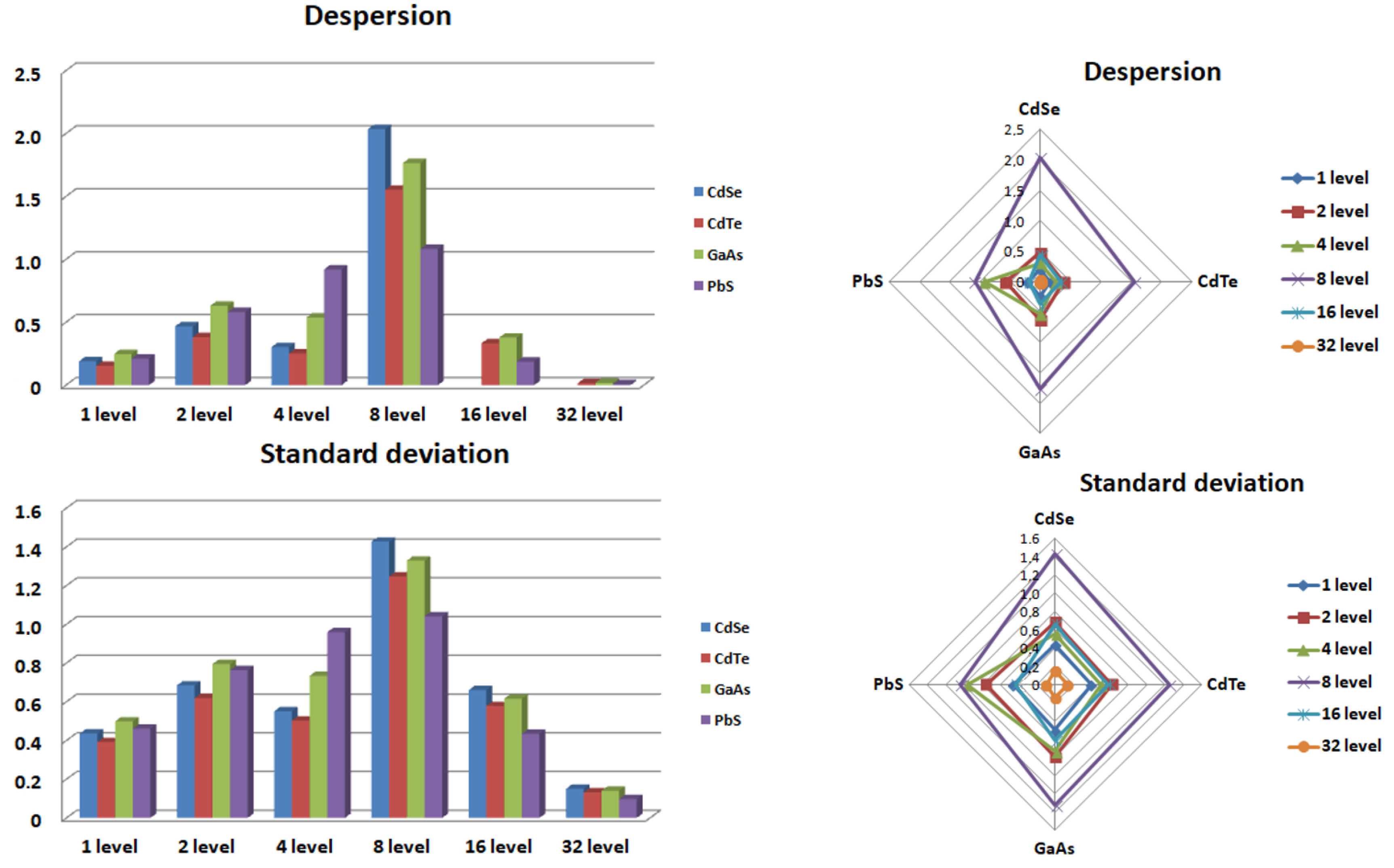
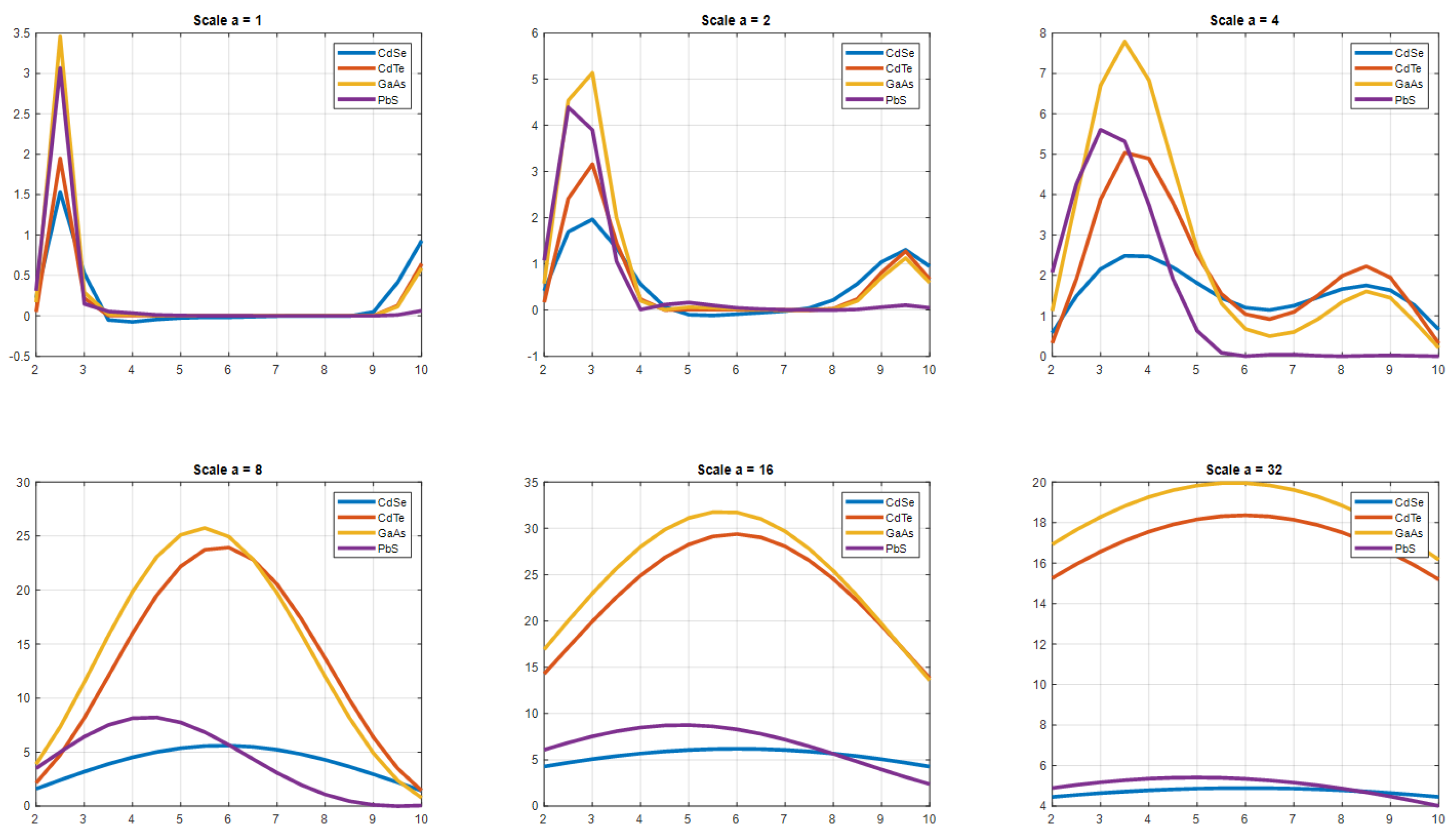
| Nanocrystal Material | Effective Electron Mass, | Effective Electron Mass, | Effective Point Charge Mass, * | Transition Energy Eg, eV |
|---|---|---|---|---|
| PbS | 0.07 | 0.09 | 0.04 | 0.41 |
| GaAs | 0.06 | 0.51 | 0.054 | 1.4 |
| CdTe | 0.14 | 0.35 | 0.1 | 1.50 |
| CdSe | 0.13 | 0.45 | 0.1 | 1.74 |
| QD Radius, | CdSe | CdTe | GaAs | PbS | ||||
|---|---|---|---|---|---|---|---|---|
| nm | E, eV | Wavelength, nm | E, eV | Wavelength, nm | E, eV | Wavelength, nm | E, eV | Wavelength, nm |
| 2.0 | 2.67 | 465 | 2.42 | 507 | 3.11 | 394 | 2.74 | 448 |
| 2.5 | 2.34 | 532 | 2.09 | 587 | 2.49 | 491 | 1.90 | 645 |
| 3.0 | 2.15 | 577 | 1.91 | 642 | 2.16 | 567 | 1.44 | 848 |
| 3.5 | 2.04 | 608 | 1.80 | 681 | 1.96 | 626 | 1.17 | 1050 |
| 4.0 | 1.97 | 630 | 1.73 | 708 | 1.83 | 671 | 0.99 | 1240 |
| 4.5 | 1.92 | 646 | 1.68 | 729 | 1.74 | 705 | 0.87 | 1410 |
| 5.0 | 1.89 | 658 | 1.65 | 744 | 1.67 | 732 | 0.78 | 1570 |
| 5.5 | 1.86 | 667 | 1.62 | 755 | 1.63 | 753 | 0.72 | 1710 |
| 6.0 | 1.84 | 674 | 1.60 | 765 | 1.59 | 770 | 0.67 | 1830 |
| 6.5 | 1.83 | 680 | 1.59 | 772 | 1.56 | 784 | 0.63 | 1940 |
| 7.0 | 1.82 | 684 | 1.57 | 778 | 1.54 | 796 | 0.60 | 2040 |
| 7.5 | 1.81 | 688 | 1.57 | 783 | 1.52 | 805 | 0.58 | 2130 |
| 8.0 | 1.80 | 691 | 1.56 | 786 | 1.51 | 813 | 0.56 | 2210 |
| 8.5 | 1.79 | 694 | 1.55 | 790 | 1.49 | 820 | 0.54 | 2270 |
| 9.0 | 1.79 | 696 | 1.55 | 793 | 1.48 | 825 | 0.52 | 2330 |
| 9.5 | 1.78 | 698 | 1.54 | 795 | 1.48 | 830 | 0.51 | 239 |
| 10.0 | 1.78 | 699 | 1.54 | 797 | 1.47 | 834 | 0.50 | 2430 |
| Material | Wavelet Function | |||
|---|---|---|---|---|
| QD | Haar Wavelet | Gaussian Wavelet of the 1st Order | Wavelet “Mexican Hat” | Daubeshi Wavelet of the 4th Order |
| PbS |  |  | 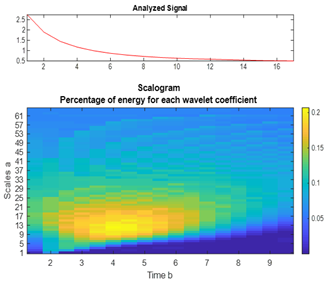 | 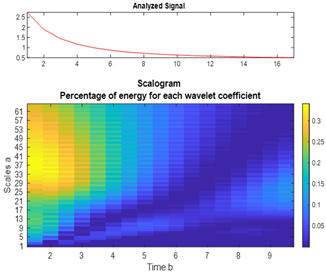 |
| GaAs | 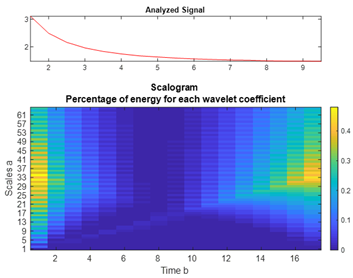 | 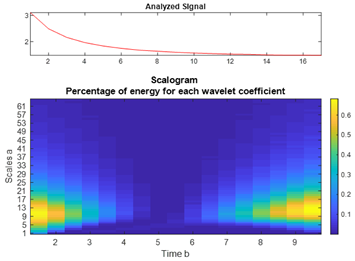 | 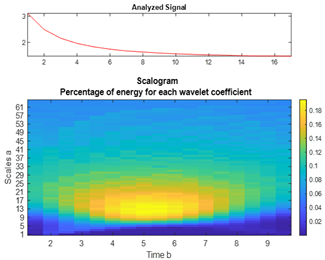 | 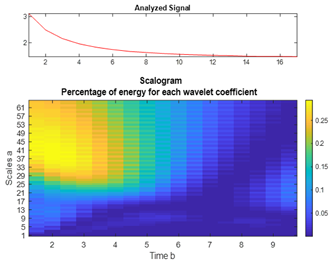 |
| CdTe | 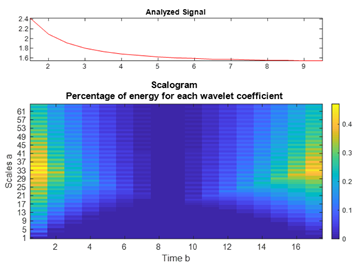 | 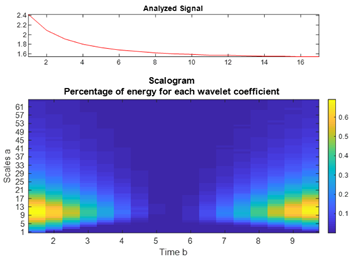 | 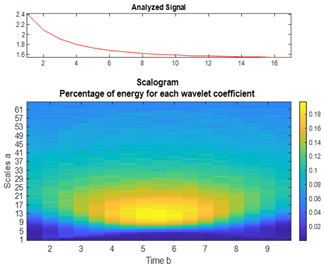 | 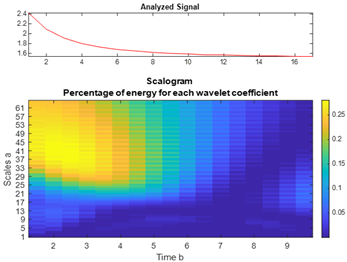 |
| CdSe | 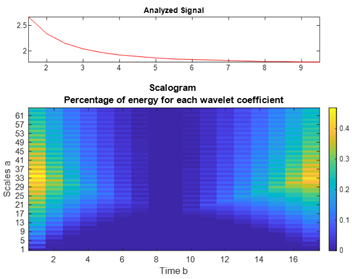 | 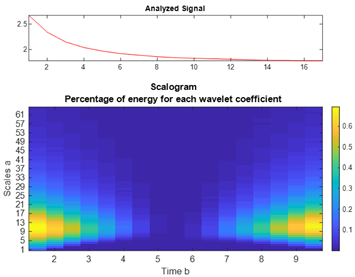 | 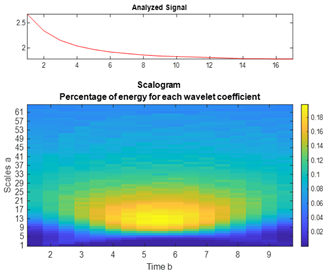 | 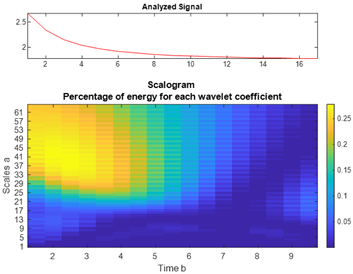 |
| Wavelet | Setting | CdSe | CdTe | GaAs | PbS |
|---|---|---|---|---|---|
| Gaussian of the 1st order | Shanon | −89.8469 | −56.4606 | −75.7172 | −17.6034 |
| LogEnerge | 22.4197 | 17.8532 | 18.7774 | −7.3786 | |
| Gaussian of the 2nd order | Shanon | −89.8469 | −56.4606 | −75.7172 | −17.6034 |
| LogEnerge | 22.4197 | 17.8532 | 18.7774 | −7.3786 | |
| Mexican Hat | Shanon | −89.8469 | −56.4606 | −75.7172 | -17.6034 |
| LogEnerge | 22.4197 | 17.8532 | 18.7774 | −7.3786 | |
| Daubechies of the 4th order | Shanon | −89.8469 | −56.4606 | −75.7172 | −17.6034 |
| LogEnerge | 22.4197 | 17.8532 | 18.7774 | −7.3786 |
Disclaimer/Publisher’s Note: The statements, opinions and data contained in all publications are solely those of the individual author(s) and contributor(s) and not of MDPI and/or the editor(s). MDPI and/or the editor(s) disclaim responsibility for any injury to people or property resulting from any ideas, methods, instructions or products referred to in the content. |
© 2023 by the authors. Licensee MDPI, Basel, Switzerland. This article is an open access article distributed under the terms and conditions of the Creative Commons Attribution (CC BY) license (https://creativecommons.org/licenses/by/4.0/).
Share and Cite
Kozhanova, E.; Danilov, S.; Belyaev, V. Methods of Recognition Based on Wavelet Transform for Analysis of Characteristics of Spherical Quantum Dot. Eng. Proc. 2023, 33, 35. https://doi.org/10.3390/engproc2023033035
Kozhanova E, Danilov S, Belyaev V. Methods of Recognition Based on Wavelet Transform for Analysis of Characteristics of Spherical Quantum Dot. Engineering Proceedings. 2023; 33(1):35. https://doi.org/10.3390/engproc2023033035
Chicago/Turabian StyleKozhanova, Evgenia, Sergey Danilov, and Victor Belyaev. 2023. "Methods of Recognition Based on Wavelet Transform for Analysis of Characteristics of Spherical Quantum Dot" Engineering Proceedings 33, no. 1: 35. https://doi.org/10.3390/engproc2023033035
APA StyleKozhanova, E., Danilov, S., & Belyaev, V. (2023). Methods of Recognition Based on Wavelet Transform for Analysis of Characteristics of Spherical Quantum Dot. Engineering Proceedings, 33(1), 35. https://doi.org/10.3390/engproc2023033035






